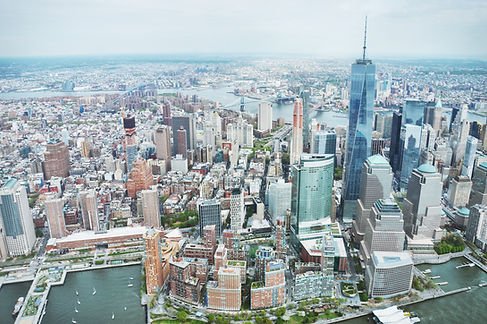Will New York's Labor Market Recover from COVID-19?
- Melinda Mack

- Mar 30, 2020
- 4 min read
Over the last four weeks, our lives, work and communities have dramatically changed due to COVID-19. Parents are juggling new family schedules; employers are grappling with keeping staff on their payroll; and many New Yorkers are unsure when they will see a regular paycheck again. In New York, Governor Cuomo has been a tremendous leader is slowing the spread of the virus and prioritizing the health and safety of New Yorkers. Everyday heroes in healthcare, public service, transportation, grocery stores, and critical supports for the most vulnerable people in our State are on the front lines buoying our communities during this crisis. Their commitment to service is an incredible reminder of what New Yorkers are made of.
As we begin to round the bend of COVID-19, getting people back to work will be front in center to bringing the State and the Nation back from the economic aftershocks. This week we began to see signs of the devastation COVID-19 has had on the labor market. It is truly astonishing. Last week, we learned that 3.3 million people filed for unemployment insurance nationally, the highest number since the government began tracking in 1967, and five times the prior record set in 1982. In New York, workers filed over 80,500 claims, and the New York State Department of Labor has shared millions and millions have visited the Unemployment Insurance website and phone lines. In stark contrast, just three weeks ago, weekly jobless claims were at a historic low nationally, hovering around 200,000 nationally.
Despite these massive numbers, these early data points do not reflect the full impact of who is losing their jobs. Workers who are furloughed, independent contractors, many tipped employees and part-time workers have been unable to benefit from Unemployment Insurance. This includes many service sector, restaurant employees, gig workers and freelancers, and entrepreneurs. The federal CARES Act, or stimulus, aims to address this and expand eligibility to include many of these workers. This will undoubtedly raise unemployment rates across New York State, and economists are already estimating that what has occurred thus far will likely wipe out the job gains of the last 10 years. There are estimates that the U.S. will be hitting 10% unemployment, on par with the Great Recession, by next month. Other scenarios paint a much bleaker picture, with unemployment nearing 25% as mass dislocation occurs.
What will this mean for New York? What we do know, this is unlike any time in modern history and at this point all projections, are just that, projections. However, we do have some clues to what we can expect. As we look statewide the top 10 largest occupations, which makes up nearly 2 million jobs, are dominated by low wage work. Of the occupations represented, 9 out of 10 pay less than $32,000, and the vast majority are in sectors directly impacted by COVID-19. They include retail salespersons, food prep workers, waiters and waitresses, cashiers, and office administrative roles.
Due to the State’s dependence on low wage work, too many New Yorkers have struggled to make ends meet even when the economy was booming. The United Way of New York estimates that 45% of New Yorkers are “working poor” unable to cover basic monthly costs of food, childcare, transportation, housing, etc. The Federal CARES Act is looking to address this through one-time payments to adults of $1,200 per adult and $500 per child; as well as providing an additional “pandemic payment” of $600 weekly for Unemployment Insurance through July.
Before COVID-19, educators and workforce professionals sat through countless discussions on the “Future of Work” and its impact on jobs. COVID-19 will now likely be the catalyst for a significant restructuring of work. Over the last three weeks companies have dramatically scaled remote work and digital service delivery; factories are rapidly retooling to stay relevant and support the critical needs for Personal Protective Equipment and refining their production to accommodate less workers. We will have one shot to be sure this recovery doesn’t leave people behind.
As we learned during the last Recession, that even as the economy improves, it doesn’t improve for everyone equally. As reported by Georgetown University’s Center on Education and the Workforce in, America’s Divided Recovery: College Haves and Have-Nots, 2016, people with a high school diploma or less did not rebound following the last recession. Workers with a bachelor’s degree or higher gained over 8.4 million jobs in the recovery, whereas those with a high school diploma or less gained a mere 80,000. In New York, 42% of people (5.65 million) have a high school diploma or less, and of those who completed less than a high school, nearly half never made it past 9th grade.
There is no indication that this time around recovery will be any different, therefore it is critical that resources are dedicated to postsecondary education and job training to ensure New Yorkers can re-enter the labor market. The federal CARES Act invests around $350 million in dislocated worker job training, whereas the American Recovery Reinvestment Act (ARRA) in 2008, put forward more than $4 billion dollars for workers to upgrade their current education and skills or get new skills to find a better job. Any future stimulus related to COVID-19, must make investing in education and job training a priority.
You can read more about New York's economic outlook before COVID-19 in the 2019 State of the Workforce Report.





Comments